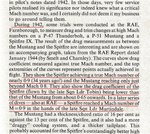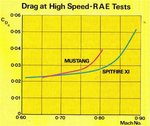It has been solidly confirmed by studies done in Germany that the Me-262 was perfectly capable of breaking the soundbarrier.
The problem which could occur was as KK describes if the pilot failed to stop the negative G the a/c automatically started to generate above .86+ Mach by trimming the tailplane.
The problem which could occur was as KK describes if the pilot failed to stop the negative G the a/c automatically started to generate above .86+ Mach by trimming the tailplane.


